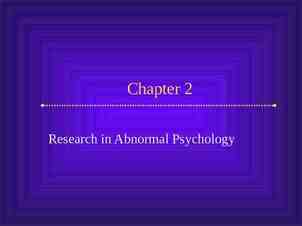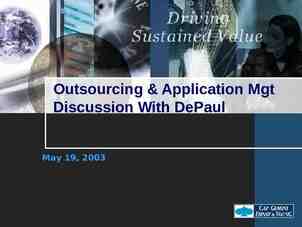INTRODUCTION TO COMPUTERISED ACCOUNTING Explained By: Sarbjit
12 Slides167.00 KB
INTRODUCTION TO COMPUTERISED ACCOUNTING Explained By: Sarbjit Kaur. Lecturer, Department of Computer Application, PGG.C.G., Sector: 42, Chandigarh
CONTENT MEANING OF COMPUTERISED ACCOUNTING TRADITIONAL/MANUAL SYSTEM OF ACCOUNTING PROCESS OF COMPUTERISED ACCOUNTING FEATUERES OF COMPUTERISED ACCOUNTING DIFFERENCE BETWEEN MANUAL ACCOUNTING SYSTEM AND COMPUTERISED ACCOUNTING ADVANTAGES AND DISADVANTAGES OF COMPUTERISED ACCOUNTING PROCESS/STEPS IN COMPUTERISED FINANCIAL ACCOUNTING ADVANTAGES OF THE COMPUTERISED FINANCIAL ACCOUNTING SYSTEM VARIOUS COMPONENTS OF A COMPUTERISED FINANCIAL ACCOUNTING SYSTEM
MEANING OF COMPUTERISED ACCOUNTING As its name suggests, "computerized accounting" is accounting done with the aid of a computer. It tends to involve dedicated accounting software and digital spreadsheets to keep track of a business or client's financial transactions. Computerized accounting is a beneficial use of current technological advances. Not only has it revolutionized the traditional paper methods of accounting, but it has also created new types of accounting applications for business. Companies now create entire accounting information systems that integrate all business operations, including external suppliers and vendors in the value chain. Computerized accounting systems (or software) have replaced manual-based accounting in virtually all businesses and organizations, providing accountants, managers, employees and stakeholders access to vital accounting information at the touch of a button. Computerized accounting systems automate the accounting process--improving efficiency and cutting down costs. Computerized accounting has many advantages over traditional manual accounting. Computerized accounting tends to be more accurate, is faster to use, and is less subject to error than its manual counterpart.
TRADITIONAL/MANUAL SYSTEM OF ACCOUNTING Input Data & instructions Processing Manual processing Output Inforamtion
PROCESS OF COMPUTERISED ACCOUNTING Input Data & instructions -Cheques/Receipts -Debit Notes -Credit Notes -Invoices Processing Electronic Processing Through Computers Output -Profit & Loss A/c -Balance Sheet
FEATUERES OF COMPUTERISED ACCOUNTING 1. 2. 3. 4. 5. 6. 7. 8. 9. Fast, Powerful, Simple and Integrated Complete Visibility Enhanced User Experience Accuracy Speed Scalability Power Improved Business Performance Quick Decision Making Complete Reliability
DIFFERENCE BETWEEN MANUAL ACCOUNTING SYSTEM AND COMPUTERISED ACCOUNTING Recording of data Data entering Classification and processing of data Data Storage Reporting Accuracy Lesser paper work Codifiction of data Data sharing Adujusting entries
ADVANTAGES OF COMPUTERISED ACCOUNTING Codification is possible Easy control Universal application Easy to process voluminous data
DISADVANTAGES OF COMPUTERISED ACCOUNTING Needs heavy investment Problem of security Loss of data An artificial device Possibility of manipulations Not suitable for small firms Requries training on part of accountants
PROCESS/STEPS IN COMPUTERISED FINANCIAL ACCOUNTING Planning and opening of an Accounting System Entering of data Coding Bank reconciliation Posting Printing of trail balance Finalization of Accounts
ADVANTAGES OF THE COMPUTERISED FINANCIAL ACCOUNTING SYSTEM Computerized System has a lot of memory, it can record and store the large data in its memory, which is limited one in manual system. Due to Coding, it’s easy to record and process with the data in case of computerized system. The system is flexible. The information provided by the computer system is believed to be more accurate, reason being the chances of mistake are less in this.
VARIOUS COMPONENTS OF A COMPUTERISED FINANCIAL ACCOUNTING SYSTEM The major components of financial accounting software are as under: - General ledger programs - Accounts payable program - Accounts receivable program - Payroll program - Fixed assets accounting program - Inventory accounting programmes.

















